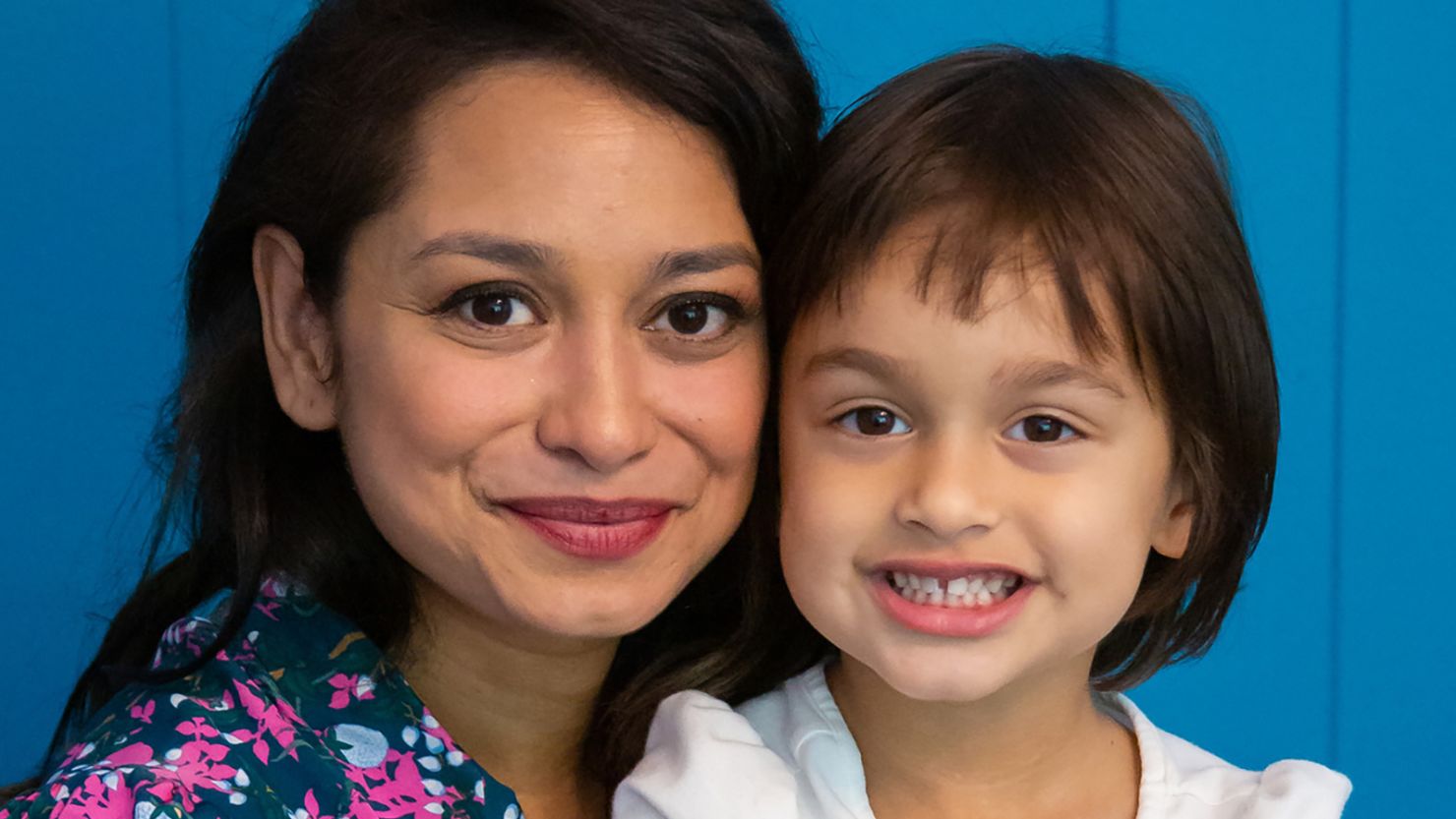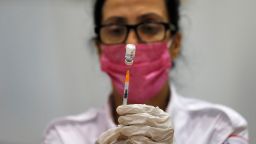Editor’s Note: Anushay Hossain is the author of “The Pain Gap: How Sexism and Racism in Healthcare Kills Women.” She is also the host of the Spilling Chai podcast. The views expressed are her own. Read more opinion on CNN.
After spending the last two years terrified of getting Covid-19, last month our four-year-old daughter – too young to be vaccinated, much less boosted – got sick. There was an outbreak in her pre-K classroom, so as soon she got a temperature, we did an at-home test.
We spent a few sleepless nights fighting to bring her 103-degree fever down as our little warrior coughed and struggled with congestion. Her doctor told us to only take her to the hospital if she had trouble breathing. The biggest “weapon” I had to help my kid was over-the-counter medicine to reduce her fever.
Thankfully, my little girl has now recovered, and overall Covid-19 was “swift and mild” on us as a family. But the experience was still traumatic – even for a now-experienced “pandemic mom” like me. After all, as the working parent of two daughters, I’ve been at this for a while now.
After more than 18 months of masking, isolating, quarantining, podding, testing, vaccinating and boosting, I thought I had all the tools to stand up to Covid – or at least to prepare for it. But nothing readied me for the moment when my husband handed over our daughter’s positive home rapid test.
In a matter of seconds, our biggest fear came true. My husband, my older child and I are all vaccinated, but it was our youngest who got Covid-19. As soon as we managed to get her fever and symptoms under control, my 10-year-old tested positive, followed by my husband. They are healthy and suffer from no additional Covid-related vulnerabilities, so I wasn’t nearly as worried about them as I was about my youngest because as I knew the vaccine would protect them from hospitalization or worse.
Although everyone made it out OK, especially our little Layla, I can’t stop thinking about how, as a country, the US just can’t seem to effectively prioritize the well-being of children. How could we so excitedly tout having a vaccine when it doesn’t include the very youngest kids? As kids across the country return to school without clear and accessible testing measures in place, how can anyone be claiming to put children’s safety or protection first?
At this point in the pandemic, we need to be better prepared to take on this virus. The health of our children – not of our businesses – should be put first. For starters, that means we need a larger availability of tests and clear, consistent rules for isolating if exposed or infected. Without those measures, we cannot curb the spread of infection, which puts our young, unvaccinated children at the greatest risk.
Even in the midst of the nightmare of my toddler testing positive, I was so grateful we had at-home tests. But the only reason we had them was because my husband had thought ahead about our need for testing kits and masks during the holiday season. We were saved by pure luck while many people have struggled to find tests. That is unacceptable.
My anger is about far more than about my child getting sick. It’s about far-reaching failures – that begin at the policy levels – to make kids’ well-being a guiding principle in establishing and maintaining access to resources throughout the pandemic. The US Surgeon General, Dr. Vivek H. Murthy, warns of a youth mental health crisis. Experts call the increase in mental health problems among young people, triggered by isolation, uncertainty, fear and grief, a “parallel pandemic” happening alongside Covid.
“We really have been raising the alarm about this throughout the pandemic and for many years before as we’ve been seeing increasing rates of mental health concerns in children and adolescents,” Dr. Lee Savio Beers, the president of the American Academy of Pediatrics and a professor of pediatrics at the Children’s National Hospital, said in an interview with Education Week. “Part of the reason why we came together now is that we’re continuing to see real increases in mental health concerns, and tremendous increases in visits to pediatricians’ offices, (as well as) in child and adolescent psychiatry offices and in hospital emergency departments. And at the same time, we’re not seeing good movement around increasing the access to the services that students need.”
Reporters are also ringing the alarm. Recently, CBS News’s Chief Legal Correspondent Jan Crawford said on Face The Nation that the biggest underreported story of 2021 was the devastating impact of Covid policies on children.
“… It’s the crushing impact that our Covid policies have had on young kids and children,” Crawford explained to host, Margaret Brennan. “By far the least serious risk for serious illness … But they have suffered and sacrificed the most, especially kids and underrepresented at risk communities. And now we have the Surgeon General saying there’s a mental health crisis among our kids.”
Crawford went on to stipulate the rise in the risk of suicide attempts among girls, up 51% in 2021, with Black kids nearly twice as likely as White kids to die by suicide. She pointed to school closures, lockdowns, cancellation of sports, not being able to access some playgrounds in DC, and the overall “tremendous negative impact on kids,” and how policymakers view it as an afterthought.
“You know, it’s (sic) hurt their dreams, their future learning, loss, risk of abuse, their mental health,” Crawford says. “And now, with our knowledge, our vaccines. If our policies don’t reflect a more measured and reasonable approach for our children, they will be paying for our generation’s decisions, the rest of their lives …”
Crawford is right and I couldn’t agree with her more. But the parents of these kids are also suffering. If the surgeon general is warning about a mental health crisis among children shouldn’t experts also inquire about the mental health of their caretakers, the majority of whom globally continue to be women?
American parents need comprehensive and affordable child care, and although the Build Back Better legislation contains a lot of relief, for now, it is stuck on Capitol Hill. Meanwhile, the number of child care workers has fallen since pre-pandemic days.
Get our free weekly newsletter
This has a direct impact on women in the workforce, many of whom are mothers who want to return to work and have been forced to stay home because they simply can’t find good, affordable care for their kids. The “lucky” moms who manage to find child care may be forced to pay up to 41% more annually per child, according to a LendingTree analysis of data from the Center for American Progress. That’s just not a realistic option for the majority of Americans.
In short – the kids are not OK. But what I want to know is: why aren’t more of us talking about it? All of us – parents, policymakers, medical experts and the media, too – should do everything we can to spotlight this issue to apply pressure that might set us on a better path.
As we enter year three of the pandemic, I have a radical proposal for the world’s richest democracy: Let’s prioritize children in 2022 – their health and their rights because they’re the ones who have the highest price to pay.
And they’re already footing the bill.





